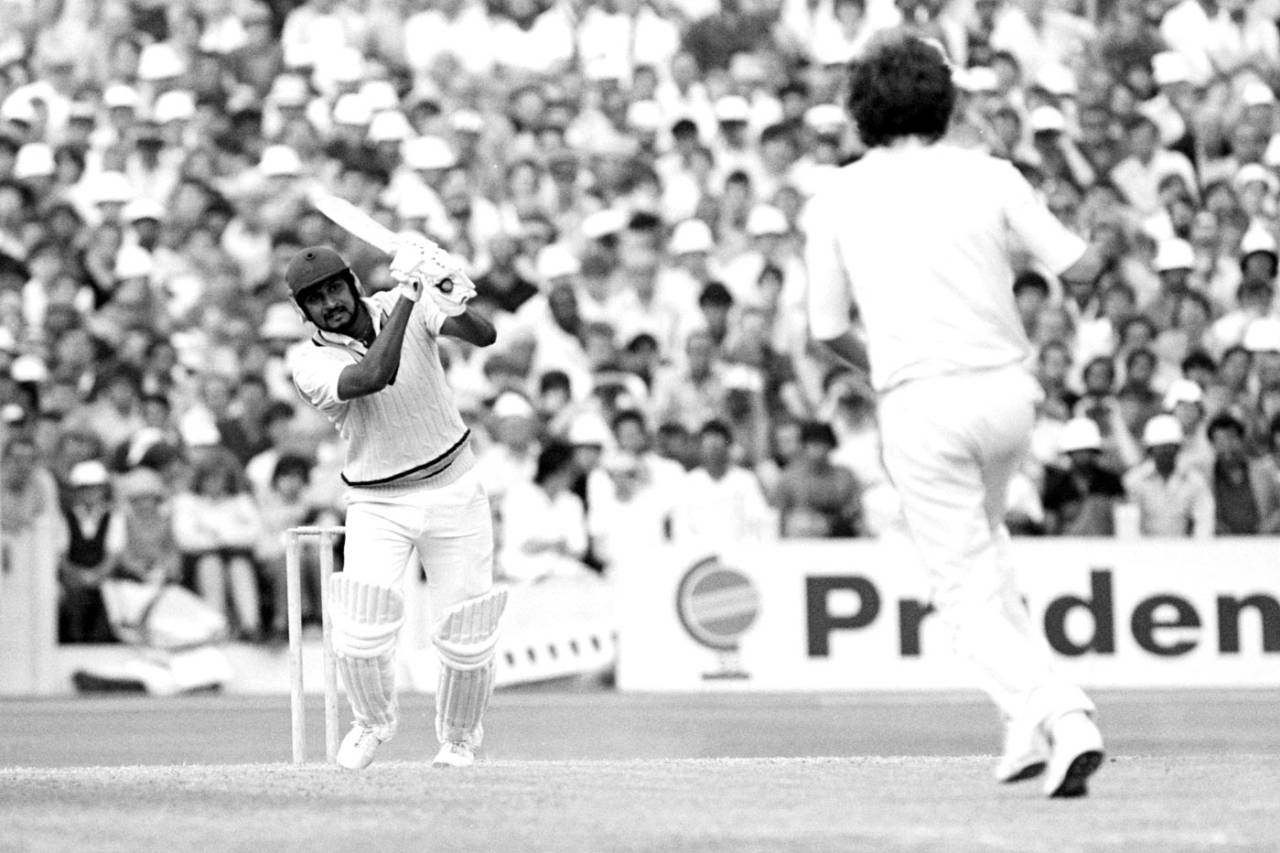India versus Australia
in Adelaide, January 1981. India have already lost the first Test of the series by an innings. Now, in response to Australia's first-innings score of 528, India are 130 for 4. They eventually score 419 and save the game.
India versus England
at Old Trafford, June 1982. India have lost the first Test of the series by seven wickets. In response to England's first-innings total of 425, India are 136 for 5. They eventually recover to 379 and save the game.
India versus England,
World Cup semi-final, June 1983. As India chase England's 213, their run rate flags, even as they keep wickets in hand. When the third wicket falls at 142, the game is still in the balance. Barely ten overs later, the game is over, decisively swung India's way.
India versus Pakistan in a one-day international
in Jaipur, on Mahatma Gandhi's birthday, October 2, 1983. Pakistan make a modest 166, and in response, India are 52 for 2, before being sent hurtling to 135 for 6 by an innings that features a shot still remembered by any Indian schoolboy who saw the game.
If you remember these games, and these developments, you will also remember the batsman who was responsible for them.
For a brief period in the 1980s, one Indian batsman promised (or threatened, depending on your perspective) to reconceptualise Indian batting. He played some of the most memorable knocks of that period, in a distinctive yet unfamiliar, style. That batsman was
Sandeep Patil.
In Adelaide against Australia, Patil scored 174 off 240 deliveries against an attack that included Lillee and Pascoe. At Old Trafford against England he scored 129 off 196 deliveries, including 18 fours and two sixes; six fours came in one over off Bob Willis. In the World Cup semi-final he hammered Willis, Graham Dilley and Paul Allott, scoring 51 off 32, turning a game that was in the balance into a rout. And in that India-Pakistan one-day international, during his innings of 51 off 28 deliveries, he launched a straight drive so fierce that the bowler - Mudassar Nazar - decided discretion was the better part of valour and nimbly skipped out of the way.
In each innings Patil, using a bat that was then the heaviest ever used by an Indian batsman, batted against fast bowling in a manner that Indian fans, not entirely used to counterattacks against the quicks, could delight in. They were used to the stoic defence of Gavaskar, the dazzling cut and thrust of Viswanath, and the bold hooks deployed by Mohinder Amarnath. But a tall, burly crasher of the ball through covers, who deployed a bludgeon for a bat, was still a novelty. Patil was not subtle; he hit the ball hard, and he intended for the ball to stay hit. His square drives and cuts were as fierce as could be imagined.
Srikkanth might have flailed away at the bowling a bit more and thus indicated a more kinetic performance was under way, but Patil conveyed the impression of a boxer whose punch, if it landed, would almost certainly knock you out. If I were a cricket ball, I could imagine Patil standing over me, saying, "Don't get up or I'll hit you again." And I'd listen. Small wonder that Mudassar decided to not risk bodily injury by attempting to field that fierce rocket off his own bowling.
I first heard of Patil from a cousin of mine, then studying dentistry in Bombay, who had seen him bat in local club games. Legend had it that he could hit sixes into the sea from the Wankhede. Another tall tale suggested he hit sixes all the way from Brabourne to Wankhede. And so on. Whatever he did, he seemed to have captured the local imagination like no other Bombay bat had in a very long time. We could barely wait for him to play for India. Which he did. He made his debut
against Pakistan in 1980, and less than five years later, he had played his last Test.
It was a disappointingly short career, made all the more so for the brief glimpses he provided us of his undoubted talent. In that time, in the games above, and on other occasions when he shone, he batted like very few Indian batsmen had before or have since, in combining power and style. It was a physical and stylistic reconfiguration of a school of batting that desperately needed new blood.
Perhaps the fondest tribute I can pay Patil is that as a Delhi fan in the 1980s, he was a Bombay batsman I could not stop admiring. If only he'd stuck around a little longer to displace the then ruling paradigms of Indian batting.
